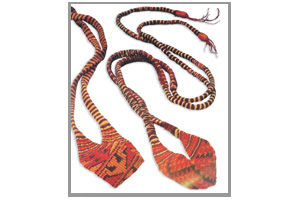There are differing opinions about how the central Andean cultures arose and evolved.
Some claim they appeared independently on the Pacific coast whereas other researchers claim farmers and fishermen from the Amazon gave birth to these cultures when they settled in the highlands and the valleys.
There is confusion over their origin, as well as controversy about how to divide their development into different periods. Therefore, and for the sake of clarity, we have chosen to present the numerous pre-Columbian peoples of this region in chronological order, although some may overlap others as they shared parts of the same period.
Chavin: The mother culture
It has traditionally been held that the first nation in this region was the Chavín culture (1000 B.C. – 400 B.C.), in spite of the recent discovery of the Caral culture. The Chavín culture served as the foundation of the later Andean cultures due to the spreading of its advanced farming, hydraulic, architectural and artistic techniques. They also established village life and other aspects of social organisation, such as division into castes and a theocratic government run by divine rules and headed by priests. It evolved mainly around the ceremonial centre of Chavín de Huantar.
One of the successors to the Chavín culture was the Paracas culture (700-100 B.C.), which encompassed the territory between the Ica and Pisco Rivers. They were one of the first pre-Columbian warrior nations of the area. Likewise, they used cranial perforation, apparently to cure illnesses, although they also deformed heads for aesthetic purposes. Vicús (400 B.C – 500 A.D) was another nation which also adopted the Chavín culture’s techniques for the irrigation of farmland and its retributive economy, an improved version of the barter system, in which even labour was exchanged.
In the Santa Valley, between the Cordillera Negra and the Cordillera Blanca, the Recuay lordship arose (0-600 A.D.) whose economy was based more on the raising of camelids (llamas, alpacas and vicuñas) than on agriculture.
Mysterious figures and the celestial city
The Moche or Mochica culture (1-800 A.D.) was one of the most influential of its time. The most important remains of this nation, whose centre was in the Moche River Valley, are the Huacas (tombs) of the Sun and the Moon. They built many roads for their active trade exchange.
The direct descendents of the Paracas were the Nazcas (100-700 A.D.), who left their enormous geoglyphs drawn on the plains located to the north of the Cawachi settlement for future generations. Using their underground aqueducts, they could cultivate maize, beans and chilli in a very dry environment. They were also skilled in textile art.
They had advanced meteorological knowledge and built large buildings. They controlled the trading routes of goods and services coming from the lower areas and they created plantations named «troughs» or sukakollos, which were built to prevent floods and retain moisture.
The Lordship of Wari (550-1000 A.D.) was one of the first Andean cultures to take in different regions and nations under its vast domain, based on its highly developed trading system, which spread from the north of Cajamarca to Arequipa, and from the highlands to the coast. They built underground sewers, and they were responsible for the quipu, an accounting system later used widely by the Incas.
Valued water
The Mayta-Chiribaya culture (700-1200 A.D) spread from the port of Ilo in Peru to the coast of the Azapa and Lluta Valleys in Chile (Region I). They lived on agricultural and sea products.
The Sican Lambayeque society-state (750-1350 A.D.) practiced an extensive form of agriculture, in expansive cultivated lands. They were also able seamen.
Another important nation was Chimú (900-1400 A.D), which exercised its influence over 1,300 kilometres of the Peruvian coast. Its capital city, Chan Chan, housed around 50,000 people, out of a total population of almost 500,000 inhabitants. In order to ensure their water supply, a vital resource for their agriculture, they built dams, canals, aqueducts, wells and sluices.
Finally, the Chancay culture is also found among the pre-Columbian cultures of the central Andes (1000-1430 A.D.). Its social organisation was based on ayllus, small kindred groups, led by a kuraka or ethnic chief.








 Muere Evita
Muere Evita